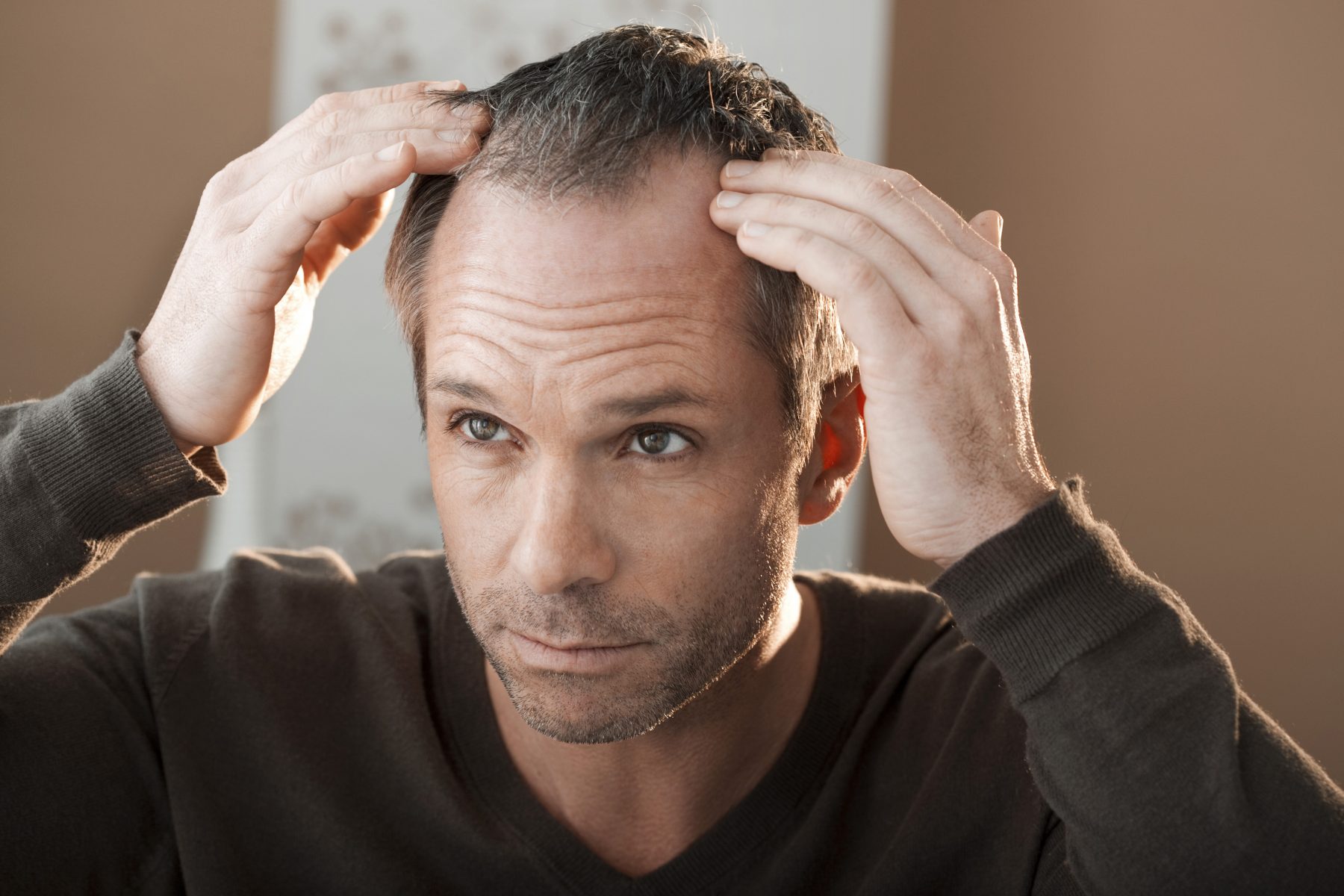
Why Is My Hair Falling Out?
HYPOTHYROID HAIR LOSS
The thyroid is the gland that is in charge of metabolism. It secretes the thyroid hormone called T4, which circulates through the blood, gets converted to the active form T3, and enters cells. There it activates DNA and essentially turns the cells on.
The thyroid hormone is what makes our heart beat a certain rate, maintains our body temperature at 98.6 degrees, and tells cells to grow and replicate. If the thyroid does not make enough thyroid hormone, it is called “hypothyroid.” When hypothyroidism is the cause of hair loss, the loss tends to be diffuse.
The outer eyebrows may also thin, and a person may even notice less body hair. In order to address this type of hair loss, the thyroid must be addressed. There are many reasons for a low thyroid hormone. Some of the most common causes include low iodine or tyrosine (the building blocks of thyroid hormone), Hashimoto’s thyroiditis, poor conversion of T4 to T3, and pituitary dysfunction.
It is important to look at all thyroid hormones, not just the thyroid-stimulating hormone (TSH), because sometimes the problem is not with TSH but other thyroid-related hormones. Additionally, the accepted normal range for TSH is very wide. Many persons have a high normal TSH but have symptoms of hypothyroid; other thyroid hormone levels may better reflect this.
Treatment will vary depending on the cause of hypothyroidism, but it often involves thyroid hormone replacement, nutrients to improve peripheral conversion and support hormone creation, as well as dietary thyroid support.
HYPERTHYROID
Sometimes, the thyroid makes too much hormone, i.e., hyperthyroid. This revs metabolism up too high, and the cells burn through nutrients. Diffuse hair loss may also be seen in this condition, along with body hair loss.
Unlike hypothyroid, persons with high thyroid hormones tend to have increased appetite, weight loss, and insomnia. Treating hyperthyroid conventionally involves the thyroid blocking medication methimazole.
Often, hyperthyroidism is part of an autoimmune condition and may spontaneously remit within a year. Once thyroid hormone levels are brought down to a normal level, hair loss should stop.
ANDROGEN EXCESS
Testosterone is the most renowned of androgens, but there are actually many different androgens, all of which have different actions. The type of androgen classically responsible for hair loss is called dihydrotestosterone (DHT).
This hair loss pattern tends to present in the classic “male pattern balding,” with hair loss coming mainly from the front and the top of the head. This is a bit of a misnomer, because women can also experience this type of hair loss.
Medications that block the conversion of testosterone to DHT — like finasteride or minoxidil — are often a first-line treatment for androgen-related hair loss. However, once the drug is stopped, hair loss resumes. There are also nonpharmaceutical substances that block the formation of DHT, like saw palmetto1 and zinc2. Other strategies include supporting hormone balance and excretion.
AUTOIMMUNE
Alopecia areata is the most common autoimmune cause of hair loss. It presents with circular patches of hair loss, which may converge or eventually include the whole head. This disease tends to remit spontaneously.
Treatment involves addressing underlying immune dysfunction and inflammation. There have been several positive studies on the efficacy of onion juice therapy to aid hair regrowth.3,4
Other autoimmune conditions that may cause hair loss include lupus, lichen planus, and alopecia totalis (also known as alopecia universalis). Often, autoimmune conditions present with systemic symptoms like fevers, weight loss, and fatigue.
NUTRITIONAL DEFICIENCY
Hair cells replicate very quickly, much like our skin cells. This means that they need a lot of nutrients and are often the first to reflect any nutrient deficiencies. Hair growth may slow, strands may break easily, and hair may even be thin.
Anyone on a proton pump inhibitor like Prilosec is at risk for nutritional deficiencies because stomach acid is essential for freeing minerals for absorption.
If a nutrient deficiency is an underlying reason for hair loss, the nails may also reflect this. Peeling, thin, and easily broken nails are signs of general nutrient deficiency. White spots on the nails, if not from trauma, are often a sign of zinc deficiency.
POSTPARTUM
During pregnancy, a woman has a lot of extra hormones and growth factors, which drive hair growth. After giving birth, these hormones and growth factors drop off sharply which triggers hair loss. Fortunately, this is largely self-limiting, and normal hair growth resumes.
INFECTIONS
Patchy hair loss may be caused by a fungal infection of the head, called tinea capitis. The fungus lives deep enough in the skin to cause hair loss, but not so deep as to trigger the immune system.
Fungal infections can happen anywhere on the body, and normally cause patches of itching and some skin peeling. Topical antifungals work well, and hair normally returns to normal thickness after the infection is resolved.
If any of these symptoms or conditions sound familiar to you, please give us a call. Progressive customizes solutions to the individual to ensure maximum effectiveness with minimal side-effects. Stop hair loss today!
- Marks, L. S., Hess, D. L., Dorey, F. J., Macairan, M. L., Santos, P. B. C., & Tyler, V. E. (2001). Tissue effects of saw palmetto and finasteride: use of biopsy cores for in situ quantification of prostatic androgens. Urology, 57(5), 999-1005.
- Azzouni, F., Godoy, A., Li, Y., & Mohler, J. (2012). The 5-alpha-reductase isozyme family: a review of basic biology and their role in human diseases. Advances in urology, 2012.
- Sharquie, K. E., & Al Obaidi, H. K. (2002). Onion juice (Allium cepa L.), a new topical treatment for alopecia areata. The Journal of dermatology, 29(6), 343-346.
- Hajheydari, Z., Jamshidi, M., Akbari, J., & Mohammadpour, R. (2007). Combination of topical garlic gel and betamethasone valerate cream in the treatment of localized alopecia areata: a double-blind randomized controlled study. Indian Journal of Dermatology, Venereology, and Leprology, 73(1), 29.
